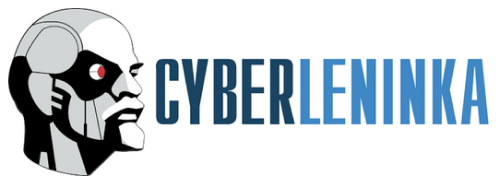Application of the Theory of Petri Nets in the Development of Simulation Models of Business Processes Based on the IDEF3 Methodology
( Pp. 51-63)
More about authors
Petrosov David A.
Candidate of Engineering, Associate Professor; associate professor at the Department of Data Analysis and Machine Learning, @fa.ru
Financial University under the Government of the Russian Federation
Moscow, Russian Federation
Financial University under the Government of the Russian Federation
Moscow, Russian Federation
Abstract:
The relevance of developing simulation models of business processes is due to the need to improve the quality of analysis of the subject area by conducting computational experiments on the developed models in popular notations. To describe technological features, the IDEF3 methodology is often used, which belongs to the IDEF family of methodologies, which has become widespread among specialists in the field of analytics, modeling and business process reengineering, both in foreign and domestic practice of analysis and modeling of various subject areas. The use of the mathematical apparatus of the theory of Petri nets is proposed as a tool for creating simulation models. This tool has a wide range of extensions that allow you to implement all the features of the IDEF3 notation. For this purpose, the study proposes an approach that describes the rules for creating simulation models of business processes that allow modeling of all existing notation objects. The development of software additions to existing CASE tools based on the proposed approach will make it possible to create simulation models of business processes directly in the process of developing domain models, as well as to use intelligent methods of structural-parametric synthesis of simulation models based on the elemental base of work units and the specified behavior of the synthesized model process. As a means of intelligent structural-parametric synthesis, genetic algorithms adapted to solving the problem of structural-parametric synthesis can be used, the operation of which is also modeled using the theory of Petri nets, which allows the use of one mathematical apparatus within the framework of all solved problems of creating simulation models of business processes.
How to Cite:
Petrosov D.A. Application of the Theory of Petri Nets in the Development of Simulation Models of Business Processes Based on the IDEF3 Methodology. Computational Nanotechnology. 2023. Vol. 10. No. 3. Pp. 51–63. (In Rus.) DOI: 10.33693/2313-223X-2023-10-3-51-63. EDN: TGIJWN
Reference list:
Lobanova I.A., Tailakova A.S., Urazovskaya T.A. Using meta-description when studying IDEF3 visual notation. In: Science. Technologies. Innovation. Collection of scientific papers of the XVI All-Russian Scientific Conference of Young Scientists. In 11 parts. A.S. Kazmina (ed.). Novosibirsk, 2022. Pp. 152–155.
Moiseeva A.A., Dostovalov D.N., Vakorin M.P. Modeling the process of solving the problem of open shop planning using the simulated annealing method in IDEF0 AND IDEF3 notations. In: Science. Technologies. Innovation. Collection of scientific works. In 9 parts. Novosibirsk, 2020. Pp. 221–224.
Bobrov A.I., Konchakov S.A., Sibiryakov M.V. Application of the IDEF3 methodology to formalize the processes of conducting emergency rescue operations at metro facilities. In: Civil defense on guard of peace and security. Materials of the IV International Scientific and Practical Conference dedicated to World Civil Defense Day. In 3 parts. Moscow, 2020. Pp. 498–501.
Neroda E.V. Application of IDEF3 methodology using the example of the process of selecting a supplier during ship repair work. In: Problems and prospects for the development of Russia: A youth perspective on the future. Collection of scientific articles of the 4th All-Russian Scientific Conference. Kursk, 2021. Pp. 323–325.
Kholodkov V.S. Designing a module for receiving and processing XML data as part of the IDEF0/IDEF3 model converter into UML language diagrams. Solution. 2018. Vol. 1. Pp. 235–236. (In Rus.)
Kholodkov V.S., Beibalaev A.M. Converter of IDEF0/IDEF3 models into UML language activity diagrams: Project architecture in accordance with the MVVM design pattern. Bulletin of Russian Youth Science. 2019. No. 1. P. 44. (In Rus.)
Solovyova E.I. Methods for modeling business processes in organizations. In: Modern trends in development in the field of economics and management. Materials of the International Scientific and Practical Conference. Moscow, 2018. Pp. 197–202. (In Russ.)
Kurkin A.V., Sila M.A. Preparing a knowledge base. Design of a system for storing and processing applications for a developing IT product. Science Week of the St. Petersburg State Maritime Technical University. 2021. No. 1-1. Pp. 45–51. (In Rus.)
Pitelinsky K.V., Stolyarov O.Yu. Analysis of the interaction of material, information, financial flows in order to increase the efficiency of marketing activities of a logistics company in the small and medium-sized business segment. In: Modern scientific research: Current issues, achievements and innovations. Collection of articles of the IV International Scientific and Practical Conference. In 2 parts. 2018. Pp. 81–87.
Semikin D.V., Kulagina I.I. Approaches to studying the dynamics of business processes through mathematical modeling. Scientific Bulletin of the Volgograd Branch of RANEPA. Series: Economics. 2018. No. 1. Pp. 97–102. (In Rus.)
Israilova S.T., Mukhanova A.A., Ismailova A.A. Main aspects of simulation modeling of enterprise business processes using Petri nets and agent-based modeling. Science news of Kazakhstan. 2021. No. 1 (148). Pp. 1–8. (In Rus.)
Meshkova V.A. Analysis and modeling of business processes using Petri nets. In: Trends in the development of modern science. Collection of proceedings of the Scientific and Practical Conference of Students and Graduate Students of the Lipetsk State Technical University. In 11 parts. Lipetsk, 2021. Pp. 97–100.
Melnik G.V., Skitsko V.I. Modeling of logistics business processes using colored Petri nets. Current Problems of Economics. 2015. Vol. 168. No. 6. Pp. 429–443. (In Rus.)
Petrosov D.A. Modeling of business processes using methods of intellectual structural-parametric synthesis based on evolutionary procedures. In: Current problems of society, economics and law in the context of global challenges. Collection of materials of the XI International Scientific and Practical Conference. Moscow, 2022. Pp. 24–27.
Kalenkova A.A. Synthesis of high-level models of business processes. Research work: Grant No. 15-37-21103. Russian Foundation for Basic Research. 2015. 224 p.
Kalyanov G.N. On the theory of business processes. Software Engineering. 2018. Vol. 9. No. 3. Pp. 99–108. (In Rus.)
Margolin M.S. Structure of simulation software designed for modeling and analysis of fuzzy business processes. Bulletin of Scientific Conferences. 2017. No. 10-4 (26). Pp. 64–73. (In Rus.)
Shershakov S.A. “Vtmine for visio”: A graphical modeling tool in the field of process mining. Modeling and Analysis of Information Systems. 2020. Vol. 27. No. 2. Pp. 194–217 (In Rus.)
Moiseeva A.A., Dostovalov D.N., Vakorin M.P. Modeling the process of solving the problem of open shop planning using the simulated annealing method in IDEF0 AND IDEF3 notations. In: Science. Technologies. Innovation. Collection of scientific works. In 9 parts. Novosibirsk, 2020. Pp. 221–224.
Bobrov A.I., Konchakov S.A., Sibiryakov M.V. Application of the IDEF3 methodology to formalize the processes of conducting emergency rescue operations at metro facilities. In: Civil defense on guard of peace and security. Materials of the IV International Scientific and Practical Conference dedicated to World Civil Defense Day. In 3 parts. Moscow, 2020. Pp. 498–501.
Neroda E.V. Application of IDEF3 methodology using the example of the process of selecting a supplier during ship repair work. In: Problems and prospects for the development of Russia: A youth perspective on the future. Collection of scientific articles of the 4th All-Russian Scientific Conference. Kursk, 2021. Pp. 323–325.
Kholodkov V.S. Designing a module for receiving and processing XML data as part of the IDEF0/IDEF3 model converter into UML language diagrams. Solution. 2018. Vol. 1. Pp. 235–236. (In Rus.)
Kholodkov V.S., Beibalaev A.M. Converter of IDEF0/IDEF3 models into UML language activity diagrams: Project architecture in accordance with the MVVM design pattern. Bulletin of Russian Youth Science. 2019. No. 1. P. 44. (In Rus.)
Solovyova E.I. Methods for modeling business processes in organizations. In: Modern trends in development in the field of economics and management. Materials of the International Scientific and Practical Conference. Moscow, 2018. Pp. 197–202. (In Russ.)
Kurkin A.V., Sila M.A. Preparing a knowledge base. Design of a system for storing and processing applications for a developing IT product. Science Week of the St. Petersburg State Maritime Technical University. 2021. No. 1-1. Pp. 45–51. (In Rus.)
Pitelinsky K.V., Stolyarov O.Yu. Analysis of the interaction of material, information, financial flows in order to increase the efficiency of marketing activities of a logistics company in the small and medium-sized business segment. In: Modern scientific research: Current issues, achievements and innovations. Collection of articles of the IV International Scientific and Practical Conference. In 2 parts. 2018. Pp. 81–87.
Semikin D.V., Kulagina I.I. Approaches to studying the dynamics of business processes through mathematical modeling. Scientific Bulletin of the Volgograd Branch of RANEPA. Series: Economics. 2018. No. 1. Pp. 97–102. (In Rus.)
Israilova S.T., Mukhanova A.A., Ismailova A.A. Main aspects of simulation modeling of enterprise business processes using Petri nets and agent-based modeling. Science news of Kazakhstan. 2021. No. 1 (148). Pp. 1–8. (In Rus.)
Meshkova V.A. Analysis and modeling of business processes using Petri nets. In: Trends in the development of modern science. Collection of proceedings of the Scientific and Practical Conference of Students and Graduate Students of the Lipetsk State Technical University. In 11 parts. Lipetsk, 2021. Pp. 97–100.
Melnik G.V., Skitsko V.I. Modeling of logistics business processes using colored Petri nets. Current Problems of Economics. 2015. Vol. 168. No. 6. Pp. 429–443. (In Rus.)
Petrosov D.A. Modeling of business processes using methods of intellectual structural-parametric synthesis based on evolutionary procedures. In: Current problems of society, economics and law in the context of global challenges. Collection of materials of the XI International Scientific and Practical Conference. Moscow, 2022. Pp. 24–27.
Kalenkova A.A. Synthesis of high-level models of business processes. Research work: Grant No. 15-37-21103. Russian Foundation for Basic Research. 2015. 224 p.
Kalyanov G.N. On the theory of business processes. Software Engineering. 2018. Vol. 9. No. 3. Pp. 99–108. (In Rus.)
Margolin M.S. Structure of simulation software designed for modeling and analysis of fuzzy business processes. Bulletin of Scientific Conferences. 2017. No. 10-4 (26). Pp. 64–73. (In Rus.)
Shershakov S.A. “Vtmine for visio”: A graphical modeling tool in the field of process mining. Modeling and Analysis of Information Systems. 2020. Vol. 27. No. 2. Pp. 194–217 (In Rus.)
Keywords:
IDEF3, mathematical modeling, simulation models, business processes, Petri net theory, structural-parametric synthesis, IDEF3, technological processes, CASE-tools.
Related Articles

1. Mathematical modeling Pages: 7-13 Issue №10450
PARALLEL SIMULATIONS OF ELECTRIC FIELDS IN MASS-SPECTROMETER TRAP FOR INCREASING OF IONS MASSES MEASUREMENTS ACCURACY
mathematical modeling
parallel computing
the mass spectrometer
the behavior of ion clouds
Show more
Nanotechnology and Nanomaterials Pages: 70-77 DOI: 10.33693/2313-223X-2022-9-4-70-77 Issue №22517
Modeling of the Electrical Properties of a Solar Cell with Many Nano-hetero Junctions
presumably catastrophic growth
greenhouse effect
carbon dioxide
volt-ampere characteristic
mathematical modeling
Show more
REGIONAL AND SECTORAL ECONOMICS Pages: 230-235 Issue №24067
Strategic and Operational Audit: Concept and Process
conceptual framework
operational audit
strategic audit
business processes
business operation.
Show more
5. MATHEMATICAL AND INSTRUMENTAL METHODS OF ECONOMICS Pages: 154-165 Issue №18204
Mathematical modeling of the spread of COVID-19 coronavirus epidemic in a number of European, Asian countries, Israel and Russia
mathematical modeling
coronavirus COVID-19
discrete logistic equation
European countries
Asian countries
Show more
MATHEMATICAL, STATISTICAL AND INSTRUMENTAL METHODS OF ECONOMICS Pages: 148-158 Issue №72283
Analysis of E-Commerce Platforms as a Rationale for the Relevance of Developing Uniform Recommendations for Sellers
e-commerce.
mathematical modeling
recommendation systems
marketplaces
e-commerce.
Show more
Elements of Computing Systems Pages: 138-146 DOI: 10.33693/2313-223X-2023-10-1-138-146 Issue №22811
Scaling Models of Electrical Properties of Photo- and Beta-Converters with Nano-Heterojunctions
scaling
nano-heterojunction
current-voltage characteristic
semiconductor converter
mathematical modeling
Show more
Information Security Pages: 144-160 DOI: 10.33693/2313-223X-2023-10-3-144-160 Issue №23683
Identification and Extraction of Electrophysical Parameters for Solar Cell Models by Experimental Data
current-voltage characteristic
parameter extraction
solar cells
silicon carbide
porous silicon
Show more
MATHEMATICAL MODELING, NUMERICAL METHODS AND COMPLEXES OF PROGRAMS Pages: 99-105 DOI: 10.33693/2313-223X-2020-7-1-99-105 Issue №16112
Mathematical modeling of the spread of COVID-19 in Moscow
coronavirus COVID-19
mathematical modeling
logistic equation
epidemic development scenarios
Show more
4. MATHEMATICAL AND INSTRUMENTAL METHODS OF ECONOMICS 08.00.13 Pages: 61-68 Issue №16787
Mathematical modeling of the spread of the coronavirus epidemic in the world and countries with the highest number of infected in the first half of 2020
pandemic
coronavirus COVID-19
epidemic spread in the world
mathematical modeling coronavirus COVID-19
mathematical modeling
Show more
1. CURRENT ISSUES OF SOCIO-ECONOMIC DEVELOPMENT OF RUSSIA. ECONOMY Pages: 7-15 Issue №9237
BUSINESS PROCESSES IN ENTERPRISES: SELF ORGANIZATION APPROACH
business structure
business processes
economic development
synergy
intangible assets
Show more










